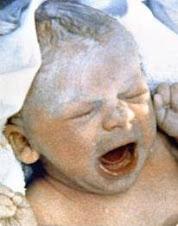Children conceived by Medically Assisted Reproduction (MAR) have fiscal implications for government both in terms of future government spending and tax revenue. Based on public funding to conceive a MAR child - after factoring in education, future health and pension costs, and future tax contributions of this child - the discounted net tax revenue (the difference between future government spending and tax revenue) of a child born in 2005 is roughly 127,000 euros in today's value.
Considering an average treatment cost of approximately 15,000 euros to conceive an IVF-child, this represents an 8-fold return on investment (ROI) for governments [1]. While the costs of MAR treatment represent a substantial proportion of a patient's annual disposable income, MAR typically represents less than 0.25% of total national healthcare expenditure. By comparison, obesity accounts for 10% and 2-4% of total health care spending in the US and Europe respectively.
MAR treatments elicit significant medical, reproductive and economic influence in developed countries with 3.5 million children estimated to have been born worldwide since 1978. These children make up a substantial proportion of national births with up to 4.1% in Denmark and 3.3% in Belgium. In the US, Europe, and Oceania over 600,000 treatment cycles resulted in 120,000 children being born in 2005. The European Society of Human Reproduction and Embryology (ESHRE) Task Force on 'Reproduction and Society' reviewed the economics of MAR to evaluate the benefits of funding of MAR for society and to inform policy makers on effective, safe and equitable financing of MAR. Dr. Mark Connolly and colleagues who published this review paper in the journal Human Reproduction Update based their findings on key epidemiological and economic studies. Affordability of IVF is one of the main drivers of treatment utilisation, choice of treatment, and embryo transfer practices which ultimately influence the multiple birth rate and infant outcomes.
Although the poorer clinical outcomes are well known, the indirect costs and hence the economic burden associated with MAR multiple birth children - which may extend well beyond the perinatal period - are less appreciated. Lack of affordable treatment may force patients and clinicians to opt for cheaper fertility treatments such as stimulated intrauterine insemination and ovulation stimulation which have less controllable means of minimising multiple births. If treatment is appropriately funded, there is less of a financial incentive to achieve pregnancy in a limited number of cycles. Additionally, restricted treatment and limited financial access coerces some patients to seek cross border reproductive treatment in countries where cheaper or less restrictive treatments are offered. The ESHRE Task Force on 'Cross Border Reproductive Care' showed in a recent survey that, of those patients that sought cross border reproductive care, only 13% received partial reimbursement and 4% total reimbursement in their own country. Different standards of care and less responsible embryo transfer practices are amongst the risks patients' face when going abroad
Saturday, June 19, 2010
Subscribe to:
Post Comments (Atom)
| Powered By widgetmate.com | Sponsored By Digital Camera |







No comments:
Post a Comment